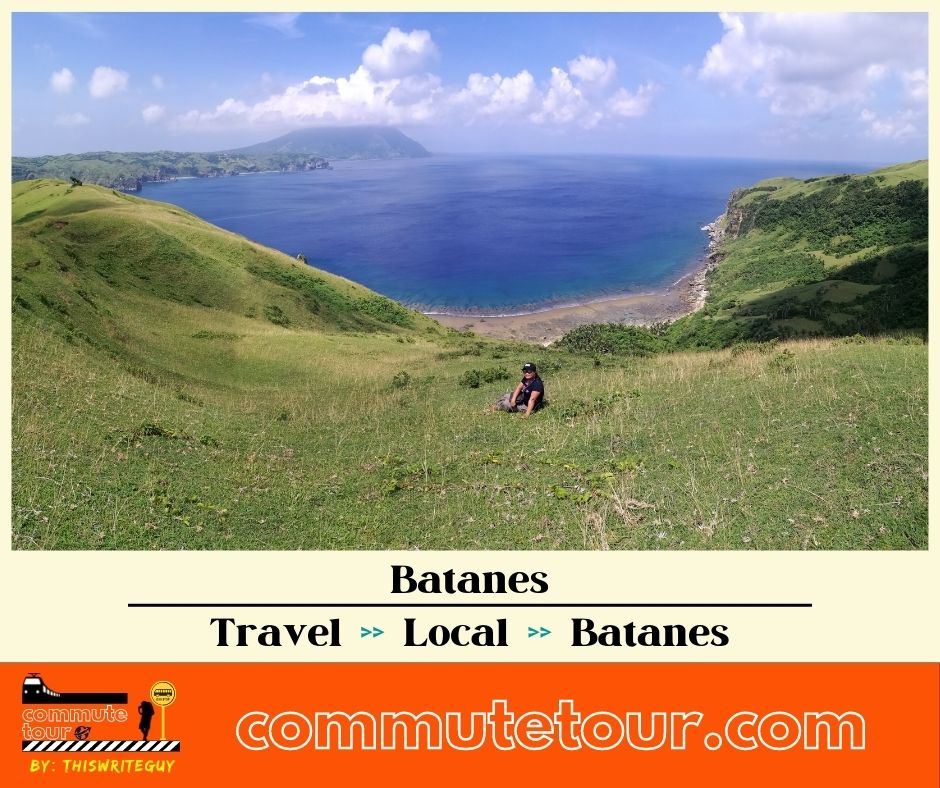Batanes Travel Guide | Ivatan & Culture | Churches
Batanes Budget Travel Guide
For many, Batanes is the last frontier and one of the most elusive provinces in the Philippines. Being able to go to Batanes is like a dream come true and to experience it is certainly a tick off the bucket list. It is truly one of a kind experience from the time you book the cheapest flight until the completion of the 5-10 days trip.
Planning for a future travel to Batanes? In this Batanes Travel Guide, You will learn how to find cheap flights to Batanes, I will help you Learn more about Ivatan Culture, the Churches and Weather and where to stay in Batanes.
Batanes
Batanes is located at the northern tip of the Philippines, 663 kilometers from KM-0 in Rizal Park. The province belongs to the Cagayan Valley Region or Region 2 and it’s capital, Basco, is located in Batan Island, the second biggest island in Batanes.
Distance wise, Basco is actually closer to Taiwan than in mainland, Philippines in Sta Ana Cagayan but the Philippine border extends several kilometers north of Basco. Mavulis in fact is just 80 kilometers shy of Taiwan border.
The ten islands of Batanes are volcanic in nature divided into three main inhabited islands Batan, Sabtang, Itbayat and seven uninhabited Mavulis (or Y’ami) Island, Misanga, Ditarem, Siayan, Diogo, Ivuhos, and Dequey (wiki).
The famous Mt Iraya in Batan island is a dormant volcano which last erupted in 1454.
Ivatan and Itbayat, the natives of Batanes
The locals of Batanes are called Ivatan and Itbayat, referring to the two largest islands of Batanes. According to some sources, the real origin of the Ivatans are unknown but they are able to trace thru dialect closely relating to that of the Ilocanos. Archeological studies of Dr. Peter Bellwood of the Australian National University points out the origin being that of Austronesians from Taiwan who branched out to Malays, and Indonesians.
The first dwelling in Batanes was believed to be in Torongan Cave in Itbayat.
Costumes and Traditional Wear
The Ivatans are famous for their handwoven head protection made of palm, cogon or abaca. For ladies, the traditional head wear is called “VAKUL” while the male chaleco is called “KANA-I”. The Vakul is especially designed as both sun and rain protection. Batanes is notorious for its open areas and basking in the sun in a few hours may cause your skin to turn red or brown or very dark chocolate.
Honesty and Crime Rate
As of 2015 census, There are around 17,246 residents in the province. Despite the low population, the recorded crime rate in Batanes is also minimal. Philippine Information Agency reports that from May 1 to August 31, 2020, there were only 13 reported crime incidence.
In Ivana, south area of Batan, there is a well-known store called HONESTY COFFEE SHOP that allows its customers to just leave the payment in a box. The customers just list the purchased items. If you have a bill and you plan to buy, the change will just be a tip so make sure to have coins handy.
Imagine living in an ideal world like Batanes where there is barely any crime rate as people respect each other and does not wish ill of their neighbor.
Houses in Batanes
Architect Jose F. Ignacio, UAP, discussed the Ivatan houses extensively on his paper, Heritage Architecture of Batanes Islands in the Philippines: a Survey of Different House Types and Their Evolution. According to the publication, the houses in Batanes were built primarily of wood, lime, stone, and thatch (a roof covering of straw, reeds, palm leaves). Most of the old houses are designed with thick walls to endure strong typhoons that pass by the Pacific Ocean towards Taiwan, China and Japan.
The two storey limestone – wood houses are divided to a lower level storage and an uppper level dwilling area. Sometimes, the kitchen is located on a separate sturcure made of wood and straw.
Modern day houses are already similar to that of the mainland but are still designed to withstand strong typhoons and some earthquakes.
Churches in Batanes
In 1783, The spanish Governor-General José Basco y Vargas claimed Batanes as part of the Philippines. The town was named after the Governor General Basco, and soon thereafter, the Dominican Friars started to build the Sto Domingo Church Cathedral which will be also called the Basco Cathedral.
In 1787, A few years after the Basco Cathedral was built, another church in Ivana was erected for the people of Ivana, Sabtang and Uyugan.
Batanes is mostly Roman Catholic while some has diverged to other Christian beliefs.
Seasons in Batanes
Just like any other provinces in the Philippines, Batanes has two primary seasons, summer and the rainy season. However, due to its proximity to Taiwan, locals would often tell tourists that they have winter in Batanes from December to January. The winter per se does not mean that it snows in Batanes. It simply means that it has colder temperature comparative to other regions. Baguio and Tagaytay for an instance is cold due to its altitude. The cold air descends from the Arctic region to China, Japan, South Korea and Taiwan and reaching up to Batanes.
Typhoon Season in Batanes
Batanes is also known to be prone to typhoons, however, contrary to common belief, not all typhoons pass by Batanes. It is mostly used as reference when meteorologists quote the distance from the northern Philippines. In 2019, only four typhoons – Kabayan, Liwayway, Nimfa, and Perla passed by or passed near Batanes. While in 2020, only two typhoons -Carina and Siony – hit Batanes Islands.
The self titled movie “Batanes” starring Filipina actress Iza Calzado and F4 Taiwanese actor Ken Zhu where Ken portrayed a man who was swept to Batanes from Taiwan by a strong typhoon and eventually falling in love with Iza.
Typhoon season usually start around June and extends up to November or December with the prevalence of the amihan season.
The photo from weatherspark describes the average precipitation and the wet and dry season in Basco, Batanes. According to the study, the rainy season starts to pickup from May and slowly declines around November and December. It also discusses the expected precipitation for the months of May to November. This is helpful for travellers who are planning to go to Batanes during the rainy months.
Boats of Batanes
Since Batanes is made up of several islands, getting to the other is a big task at hand. Similarly, Batanes is also a fishing community such that the livelihood of some are based on the sea. The traditional boats are called Fulua or also spelled as Fuluwa and Tataya depending on the location and purpose.
Unesco has a dedicated PDF on the types of boats being used in Batanes.
- Fulua is an 8-10 meter long open deck boat made by Isabtang and Batan that can carry up to 30 passengers and is also used to transport goods.
- Tataya from the island of Itbayat are built for stability due to the rougher waters around the island. They have a wide body and a flat bottom
The Pacific Ocean is renowned for its very turbulent waters. The boats in Batanes are specifically designed to overcome the waves by gracefully gliding. There are no outriggers to stabilize and the boat will just sway with the water. Be mindful as the boat sways, your stomach will sway too. The boats especially in Itbayat have rubber wheels in front to help in docking as the port can get very dangerous at times.
Lighthouses in Batanes
For every coastal community arises a need for lighthouses to guide the fishermen and sailors alike. Batanes is known for the lighthouses and it is part of the tourist spots in the province including the famous Naidi Lighthouse in Basco.
Batanes Milky Way
Batanes is not only picturesque duuring the day. The lack of airpollution at night makes it a perfect place to take your verymuch desired Milky Way Galaxy. These photos were taken last August 2017 through an LG G3 mobile phone only. What more if you are using a full frame DSLR?
How to go to Batanes?
Cebu Pacific and Skyjet have flights to Batanes originating from Manila while Philippine Airlines operate in Clark, Pampanga. As of April 2021, flights to Batanes are non operational for tourists. Genesis bus have daily trips to Clark Pampanga in Trinoma
You may check here how to go to NAIA from Alabang, Buendia, Cubao, PITX.
Where to stay in Batanes?
There are two types of lodging a tourist can stay in batanes. The first is the famous homestays and the second is the inn/ hotel / resort type. Homestays are usually preferred by travellers who wants to get the most out of their budget. Usually, the homestays are close to the airport where the tourists can ride a tricycle from the airport to the lodge. The second type is the Apartment / Hotel with security for those who prefer to enjoy the place and get good service.
One of the famous and most expensive in Batanes is Fundacion Pacita owned by the famous artist Pacita Abad and sister of the former congressman Florencio Abad.
Marfel’s Lodge Annex
+639088931475
https://marfellodgebatanes.com/
Tawsen’s Place
+639216398509
Reyes St, Basco,
Baletin Hometel
+639164617781
San Antonio, Batanes
Residencia du Basco
+639194802273
Payin,1 Street, Basco
Dive Batanes Lodge
+639980434910
Barangay, 72 Chajajas Street, Basco
Amboys Hometel
Basco Batanes
DDD Habitat Lodging House
+639321659176
Basco Batanes
Nathaniel’s Lodge
+639153754751
Nunez St, Barangay Kaychanarianan
Magnfred’s Place Batanes
+639054113494
Diptan & Cantero Corner st, San Antonio
Martin’s Inn
+639192228898
Castro St, Basco, 3900 Batanes
Check my other Batanes posts below
Terminal Blogs
Transport
Port and Pier
- Banaga Bacolod
- Bulalacao Mindoro
- Caticlan
- Iloilo Port
- Dumangas Iloilo
- Parola Iloilo
- Roxas Min
Bus Directory
Manila
- Alabang
- Alabang Town Center
- Avenida
- Ayala Makati
- Baclaran
- BGC Market Market
- Buendia | Gil Puyat
- Cubao
- Divisoria
- EDSA MRT Taft Pasay Rotonda
- Fairview
- Guadalupe
- Heritage Hotel
- Lawton
- Monumento
- NAIA / MIA
- PITX
- Sampaloc Manila
- Shaw Blvd
- SM Mall of Asia MOA
- SM Megamall
- SM North
- SM Southmall
- Trinoma
- VGC Valenzuela Gateway Complex Terminal
- Zapote Las Piñas
Stations
CALABARZON
- Batangas
- Cavite
- Laguna
- Quezon
- Rizal
Luzon
- Bicol
- Bulacan
- Cagayan Valley
- Claveria, Cagayan Valley
- Junction Luna (Abulug) / Apayao
- Central Luzon
- Cordillerra Autonomous Region CAR
- Ilocos
Visayas
- Aklan
- Bacolod
- Capiz
- Cebu
- Iloilo City
- Ceres NorthBound Camalig
- Mohon
- Pavia
- Robinsons Iloilo | Super
- SM Iloilo
- Tagbac Terminal
- Ungka
- Vista Mall Iloilo
Mindanao
- Bukidnon
- Camiguin
- Cagayan De Oro City
- Davao City
- Davao Del Norte
- Davao Del Sur
- Lanao Del Norte
- Misamis Oriental
- Saranggani






